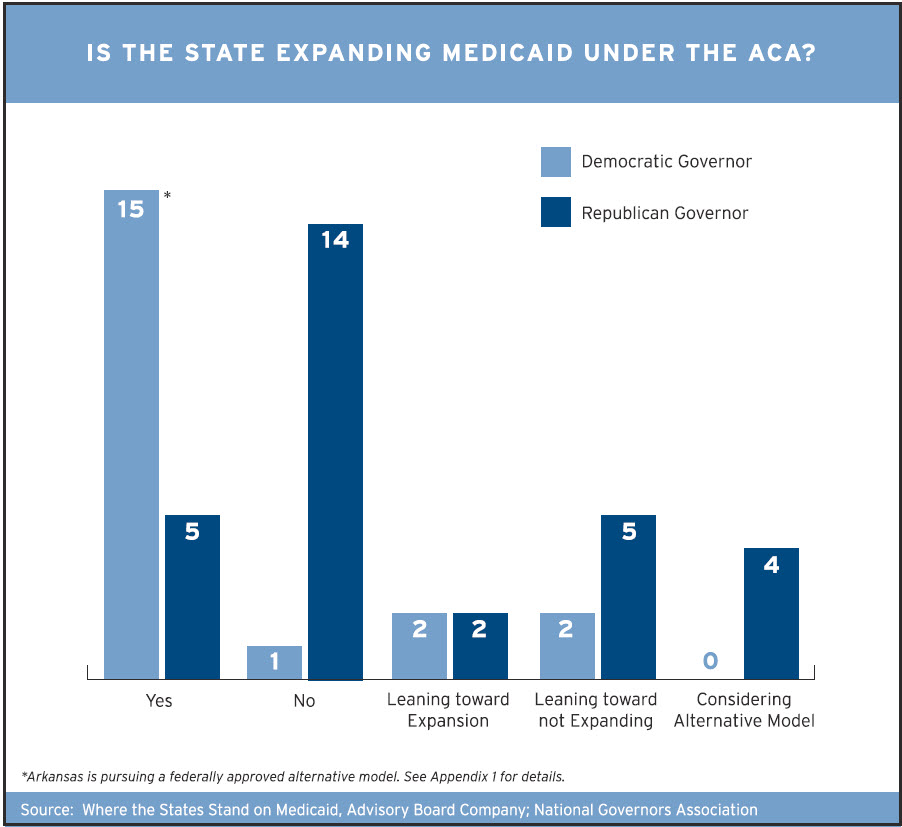Sheila Burke and Elaine Kamarck seek to offer a balanced way of looking at the implementation of the Affordable Care Act (Obamacare) that goes beyond today’s thorny political situation. They outline some meaningful metrics for establishing success or failure (or both) in the years to come. The authors first describe the complex federal-state architecture of the law and how, in many states, politics have dictated the choices made. And then they ask eight key questions that will determine the long-term versus the short-term success or failure of the health care law.
Key benchmarks for Affordable Care Act implementation include:
-
Is there a reduction in the total number of uninsured?
-
Is there an increase or stabilization in the cost of premiums on the exchanges and in the private market?
-
Are there an adequate number of plans in the exchange and does the number increase or decrease over time? Are plans exiting or entering the market over time?
-
Does the number of people who pay the penalty for not having insurance increase or decrease over time?
-
Is there a decline in employer coverage?
-
Is there a decline in full time-work and an increase in part-time work?
-
What is the extent of the conflict between federal and state oversight of health insurance and does it increase or decrease over time?
-
Is there evidence of an increase or a decrease in out-of-pocket expenditures on health care?
Because Democratic governors tended to opt for state exchanges and for the expansion of Medicaid, these states will prove to be the purest test of the thinking behind the ACA since they will do two of the most critical things anticipated to increase coverage, Burke and Kamarck assert. The blue states offer up the greatest opportunity to truly assess the ACA’s success, these scholars argue.
Example chart from the paper showing where the states stand on Medicaid:

The Brookings Institution is committed to quality, independence, and impact.
We are supported by a diverse array of funders. In line with our values and policies, each Brookings publication represents the sole views of its author(s).




